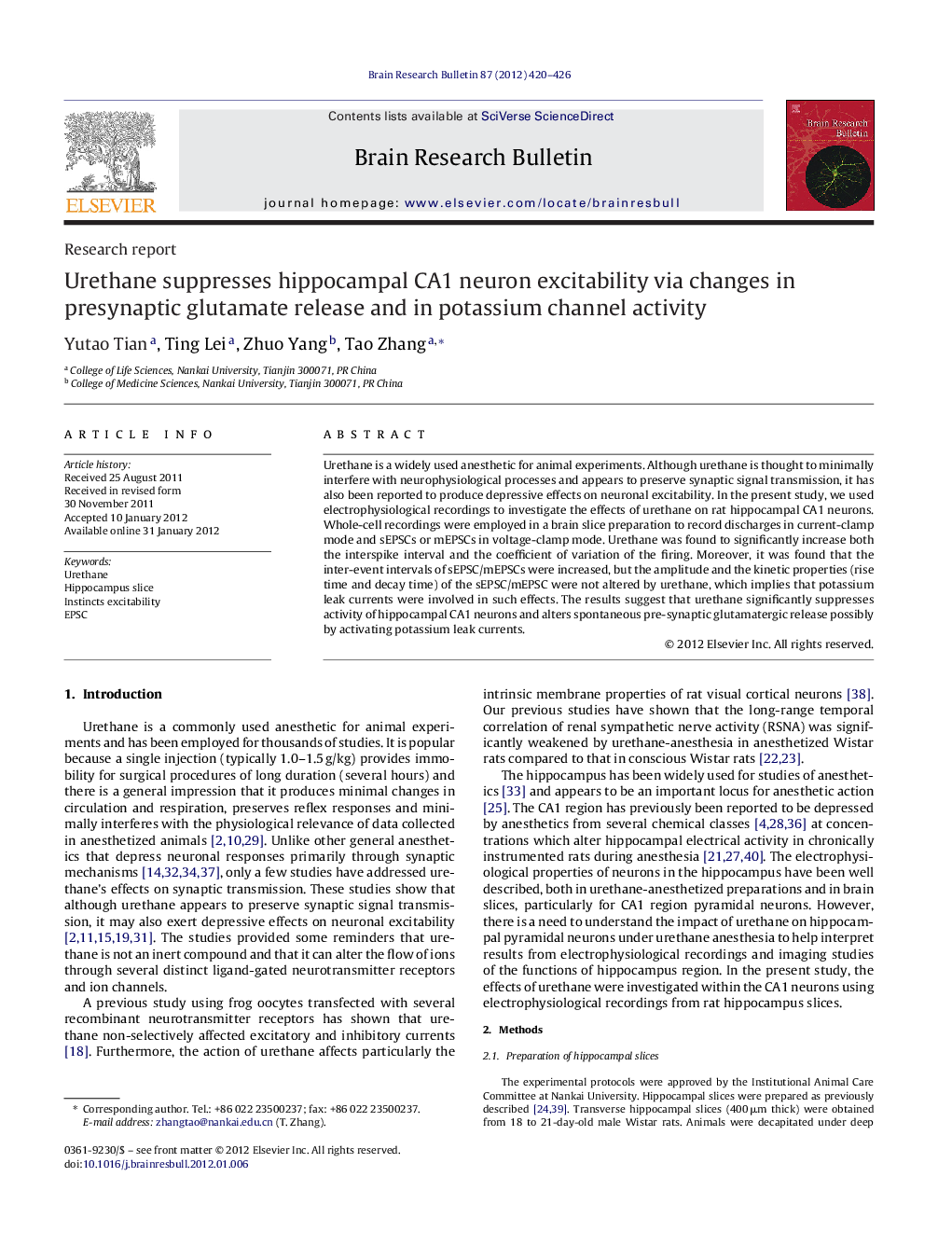| کد مقاله | کد نشریه | سال انتشار | مقاله انگلیسی | نسخه تمام متن |
|---|---|---|---|---|
| 6261935 | 1613270 | 2012 | 7 صفحه PDF | دانلود رایگان |

Urethane is a widely used anesthetic for animal experiments. Although urethane is thought to minimally interfere with neurophysiological processes and appears to preserve synaptic signal transmission, it has also been reported to produce depressive effects on neuronal excitability. In the present study, we used electrophysiological recordings to investigate the effects of urethane on rat hippocampal CA1 neurons. Whole-cell recordings were employed in a brain slice preparation to record discharges in current-clamp mode and sEPSCs or mEPSCs in voltage-clamp mode. Urethane was found to significantly increase both the interspike interval and the coefficient of variation of the firing. Moreover, it was found that the inter-event intervals of sEPSC/mEPSCs were increased, but the amplitude and the kinetic properties (rise time and decay time) of the sEPSC/mEPSC were not altered by urethane, which implies that potassium leak currents were involved in such effects. The results suggest that urethane significantly suppresses activity of hippocampal CA1 neurons and alters spontaneous pre-synaptic glutamatergic release possibly by activating potassium leak currents.
⺠Investigate how urethane inhibits neuronal activity of hippocampal neurons. ⺠Record discharges in current-clamp mode and sEPSCs/mEPSCs in voltage-clamp mode. ⺠Inter-event intervals of sEPSC/mEPSCs were increased. ⺠Amplitude and the kinetics properties of the sEPSC/mEPSC were not altered. ⺠Urethane may alter synaptic responses in glutamate neurotransmitter systems.
Journal: Brain Research Bulletin - Volume 87, Issues 4â5, 10 March 2012, Pages 420-426